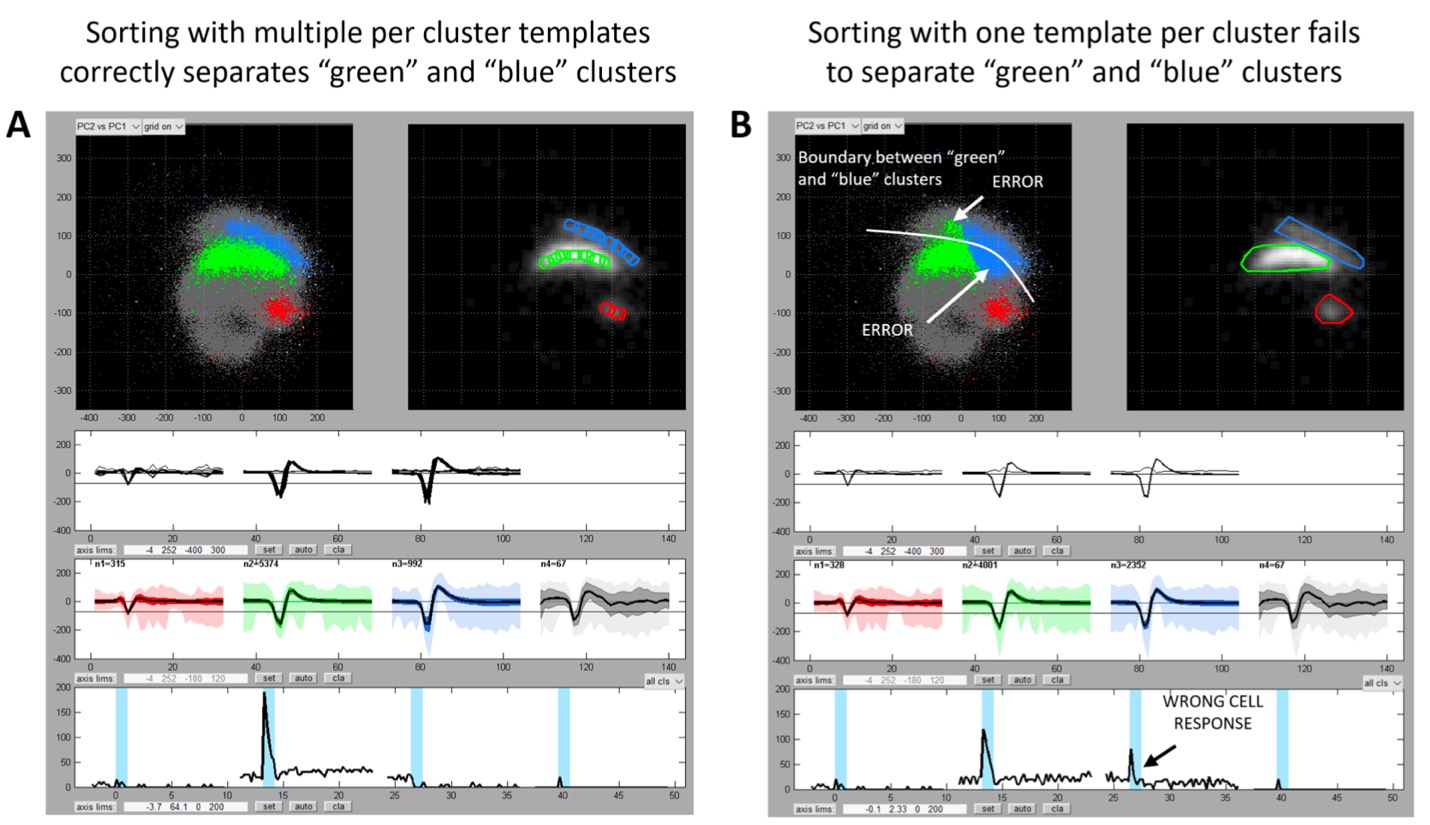PennSorter is a specialized "spike-sorting" software designed to facilitate the precise assignment of electrical signals to cells with enhanced accuracy and efficiency.
Problem:
Biomedical researchers, particularly those studying neurons and other electrically excitable cells like cardiac or muscle cells, frequently gather electrical data to support drug development and testing efforts. Analyzing these cells' signals, known as spikes, necessitates the use of software for spike sorting. Such software analyzes spikes within electrical data and attributes them to individual neuron activities. This process is critical for accurately identifying the cell responsible for a given signal and evaluating the impacts of drugs and other stimuli. Unfortunately, most commercially available spike-sorting software have limited capabilities for validating spike sorting results and do not integrate neuron firing rates calculations with the sorting process. Additionally, the existing process is labor-intensive.
Solution:
PennSorter addresses these challenges by providing spike sorting validation and error detection capabilities. Its sorting process is streamlined and user-friendly, thanks to simplified template generation and an intuitive graphical user interface (GUI). Furthermore, the software includes built-in features for calculating neuron firing rates.
Technology:
PennSorter employs a non-traditional sorting approach by utilizing multiple templates per cell cluster instead of the conventional single template method. This is achieved by defining cell clusters as combinations of subclusters, with each subcluster having its own template. Using subcluster templates enhances spike assignment validation, error detection, and sorting speed. Since a primary goal of spike sorting is to understand changes in cell firing rates in response to stimuli, PennSorter integrates firing rate calculations. Additionally, PennSorter records the sorting process and allows inspection of this recording, aiding in validation, reproducibility, and identifying potential sorting errors.
Advantages:
- The user-friendly PennSorter GUI is consolidated into a single window
- Template generation is expedited, resulting in improved sorting accuracy and up to 5x improvements in sorting speed
- Integration of firing rate calculations helps in the sorting process and allows analysis of cellular responses
- Video recording of the sorting process enhances reproducibility and error identification
- Tools and options are available for discarding distorted and noisy spikes

The figure above shows 2 screenshots from PennSorter. From the top row going downwards the images show the PCA graph (left) and its variation (right) depicting clusters, a graph displaying unit templates, a graph displaying spikes from different units, and a graph showing unit firing rates. Panel A shows sorting with multiple templates for each cluster while panel B shows the traditional method of sorting with an individual template per cluster. The latter results in incorrect assignment of signals to cells as shown by the colors crossing the boundaries in the PCA graph. This can also be seen as an artifact output in the graph displaying the firing rate. Graphs on the panel A show that this error is not present when the same dataset is sorted using multiple templates per cluster.
Stage of Technology:
- Bench Prototype
- Minimum Viable Product
Case ID:
23-10498-tpNCS
Web Published:
10/9/2023
Patent Information:
| App Type |
Country |
Serial No. |
Patent No. |
File Date |
Issued Date |
Expire Date |